When trying to update our computer, we encountered Windows Update Error Code 0x80244010. Due to this, we cannot download or install the latest version of Windows on our computer. In this post, we will see what you can do to resolve the issue.
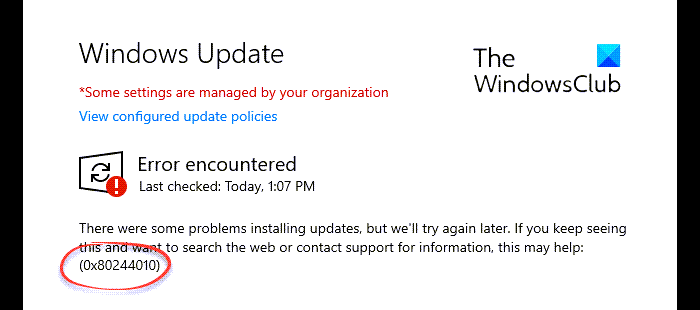
This error code occurs when the device exceeds the maximum number of requests to the update server, commonly the WSUS, during the update process. This limit is usually set to 200 requests. To resolve this, you may also consider checking network connections or adjusting the request settings on the update server.
Fix Windows Update Error Code 0x80244010
If you encounter Windows Update Error Code 0x80244010, follow the below suggestions:
- Run the Windows Update troubleshooter
- Use the System File Checker tool
- Reset Windows Update components
- Clear the SoftwareDistribution folder
- Enable the Automatic Updates detection frequency policy setting.
Before you begin the steps, create a system restore point first. It will help you get back the changes if you ever need it in the future.
Now let us see them in detail.
1] Run the Windows Update troubleshooter
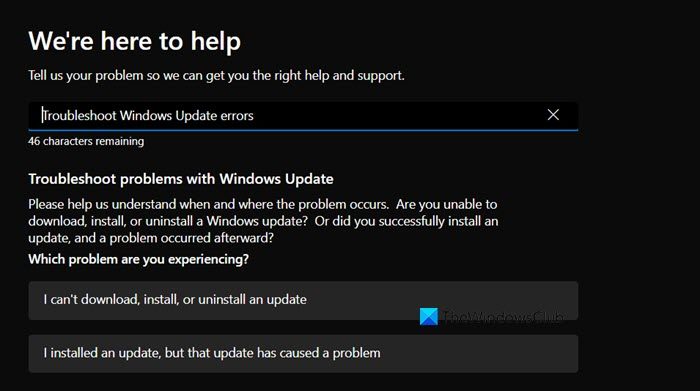
Windows Update troubleshooter is a built-in application that can certainly resolve most common Update problems on the device. Hence, it could be helpful for this issue. To run the troubleshooter, we can use the Get Help app. Open the Get Help app, in the search bar, type “Troubleshoot Windows Update errors” and then follow the on-screen instructions to resolve the issue.
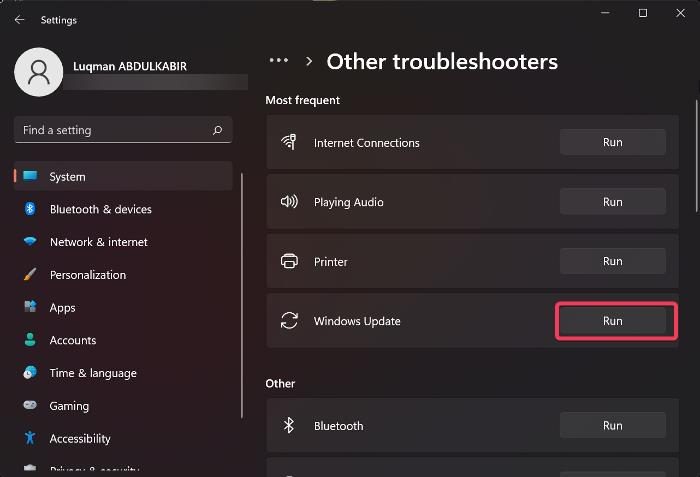
Alternatively, you can run the troubleshooter from Windows Settings as well.
If you are on a Windows 11 computer, go to Settings > System > Troubleshoot > Other troubleshooter and then click on Run placed next to Windows Update.
Windows 10 users, need to open the Windows Settings > Update & Security > Troubleshoot tab. Now move to the right pane, select Windows Update, and then hit the Run the troubleshooter button.
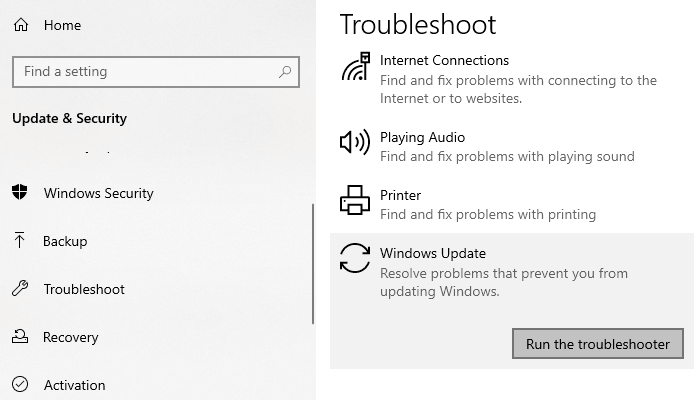
Apart from this, you can fix Windows Update errors by using the online Windows Update troubleshooter. Unfortunately, if it doesn’t work, move down to the next potential workaround.
2] Use the System File Checker tool
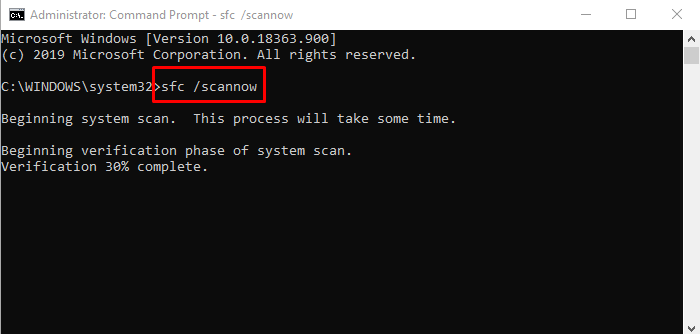
Sometimes this issue can also be caused due to corrupted or damaged Windows system files. So, there is the possibility that some system files might be missing. In this case, you need to run the System File Checker tool so that it can search the system for damaged system files and replace them if required.
So, you first need to run an elevated command prompt.
And once it opens, type the following text code:
sfc /scannow
Now press Enter and wait for a while until it completes the SFC scanning process.
Once it completes, restart your device and then check if the problem is solved now.
3] Reset Windows Update components
Sometimes this type of error occurs due to having issues with the update cache, or some faulty Windows components. Users may normally confront such a situation when the services associated with the Windows Update stop functioning. To fix such an issue, you can reset the Windows Update to default Settings using the Reset Windows Update Components tool.
4] Clear the SoftwareDistribution folder
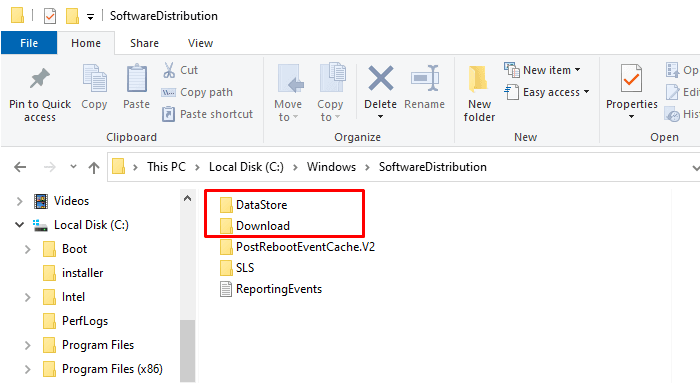
Clear the SoftwareDistribution folder and see if that works for you. Here is a quick way to do this:
First of all, right-click on the Start button and select the Run option from the menu list.
Type in services.msc in the text field and then hit the OK button. In the Services window, locate the Windows Update item from the list.
Once you find it, right-click on it and select the Properties option from the context menu.
On the General tab of the Windows Update Properties window, click on the drop-down menu of the Startup type and select Disabled.
Then click on the Stop button > Apply > OK.
Now open the Windows Explorer (Win+E) and navigate to the path “C:\Windows\SoftwareDistribution”.
Here you will see the DataStore and Download folder. Open both folders one by one and delete every file and directory inside there.
Thereafter open the Services > Windows Update > Properties window as it is explained earlier.
On the General tab, go to the Startup type and select the Automatic option using the drop-down menu.
Now, click Start > Apply > OK to save the changes.
Once you complete the steps, close the window and look for the new Windows Updates.
5] Enable the Automatic Updates detection frequency Policy
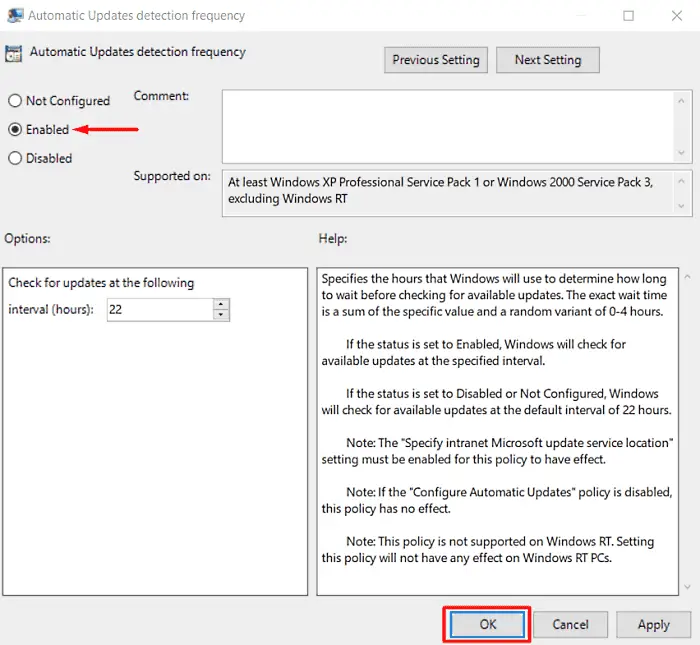
Unfortunately, if none of the above methods work for you, then try to enable the Detection Frequency policy.
To do so, you first need to open the Group Policy Editor on your Windows device.
In the Local Group Policy Editor window, copy & paste the following path to the address box and then hit enter:
Computer Configuration > Administrative Templates > Windows Components > Windows Updates
When you’re on the location, switch to the right pane and search for the Automatic Update detection frequency policy. Once you find it, double-click on it.
In the Automatic Update detection frequency window, select the radio button next to the Enabled option.
Moving ahead to the Options section, you will see the default 22 in the interval text field. So, set here less value than the default one.
Now click on the Apply > OK.
We hope the above-mentioned method would help you to resolve this issue.
Related Post: Fix Error 0x8024a206 in Windows.
What is error 0x80244010 on Windows Update?
Windows Update Error Code 0x80244010 is caused when your system is unable to download or install the latest version of Windows. In order to resolve it, you should first of all reboot your computer and see if that helps. In case, that is to no avail, go ahead and follow the aforementioned solutions.
Read: Fix Windows Update error 0x80070BC9
How do I fix error code 0x8024402c?
Windows Update error code 0x8024402c occurs when your system is attempting to connect to Microsoft’s Windows Updates servers. In order to resolve it, we need to check and reconfigure the Proxy settings as well as set up Automatically Detect the connection settings. We recommend you check our guide on Windows Update error 80x024402c to know more.
Also Read: Fix 0x80248014 Windows Update Error.
Leave a Reply